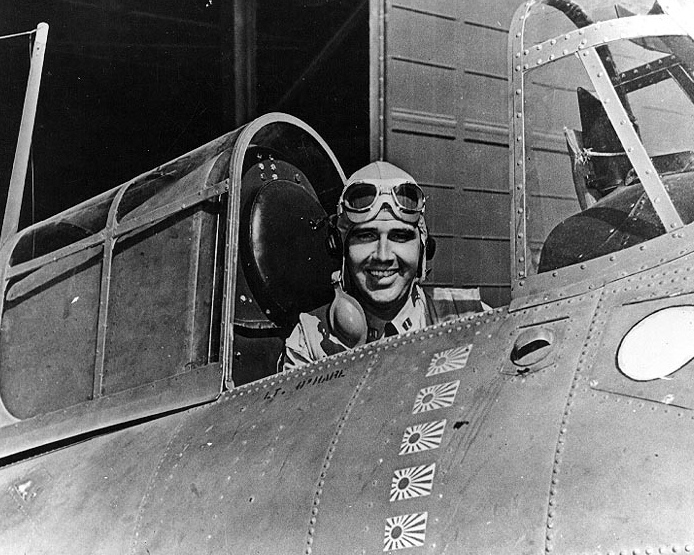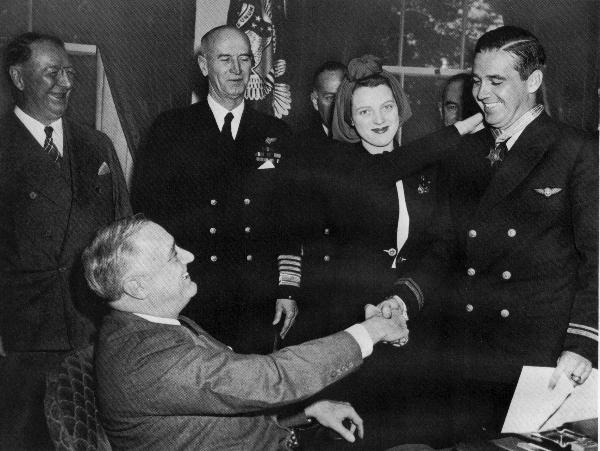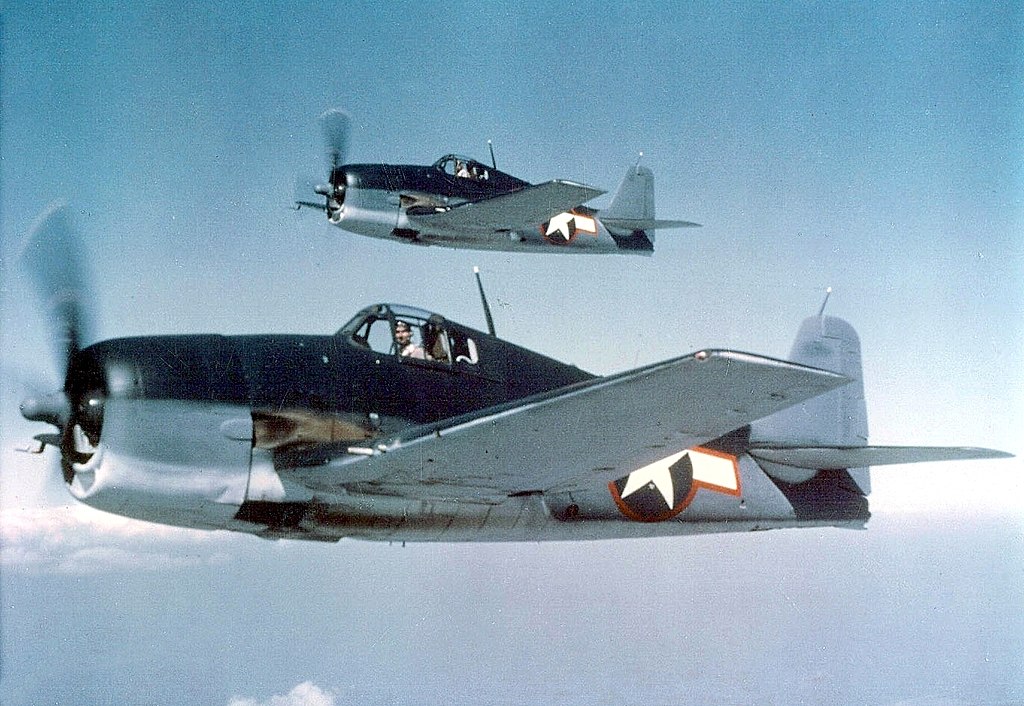O’Hare rejected the Congressional Medal of Honor recommendation made by Frederick Sherman, the captain of the Lexington, saying that any one of his squadron members would have taken the same action
For the American public, the first six months following the attack on Pearl Harbor were dark days. With the loss of Singapore, Burma, and the Philippines, the Japanese war machine appeared to be unstoppable. Solomons and the Dutch East Indies would also fall. Darwin, Australia, has already experienced Japanese air strikes. Even a Japanese submarine was able to surface off the coast of California and shell targets on the coastline. Rommel’s Afrika Corps was steadily making progress in the direction of the Suez Canal. The German U-boat assault in the Atlantic was severely impacting shipping.
With the building of a significant base in Rabaul in the Solomon Islands and the Japanese landing on New Guinea, Australia’s populous east coast might come within striking distance. The carriers Enterprise and Yorktown had already carried out a diversionary raid in the Marshall Islands, and it was left to the carrier Lexington to carry out a diversionary raid against Rabaul several weeks later, as JP Santiago explains in an intriguing article that appeared in his website, Tails Through Time. A Kawanishi H6K “Mavis” flying boat that had sighted the carrier attack force on February 20, 1942, was intercepted by Grumman F4F Wildcats from Fighter Squadron 3 (VF-3) under the command of Lt. Commander John Thach as the Lexington steamed 400 miles to the northeast of Rabaul.
The Lexington had been exposed despite shooting down the flying boat, and later that afternoon, a formation of nine Mitsubishi G4M “Betty” bombers flew toward the carrier at 11,000 feet. Despite Lexington’s combat air patrols shooting down four of the bombers, five of the aircraft made a level bombing run against the carrier. The Lexington avoided damage by delaying rapid turns until the bombs had dropped. Unfortunately, only two of Lexington’s F4F Wildcat fighters were able to intercept the incoming Bettys as the second flight of nine G4M bombers approached. Lt. Edward H. “Butch” O’Hare piloted one of the Wildcats.

A bomb run on the Lexington was about to begin when O’Hare firewalled his Wildcat and headed straight toward the bomber formation. The Betty has four machine gun defensive stations and a 20mm cannon tail gun. Known for his accuracy, O’Hare took down two bombers during his initial pass over the V-shaped formation. Then, while the sailors on board the Lexington could see it, he pulled the Wildcat into a tight turn for another run at the formation and shot down three additional bombers.
John Thach, O’Hare’s commanding officer, entered the battle and downed some additional bombers before dispersing the formation as it hastily retreated from Lexington. Butch O’Hare saves the Lexington in just four minutes, becoming the first ace in the US Navy.
O’Hare had only used sixty rounds of 0.50-caliber ammo, according to Thach! O’Hare was nominated for the Congressional Medal of Honor for his actions that day by the Lexington captain, Frederick Sherman, as detailed by Michael O’Leary in his book The United States Naval Fighters of World War II in Action. Still, he turned it down, telling his captain that any one of his squadron mates would have done the same thing.
But with the raid on Rabaul abandoned due to the loss of the element of surprise and the never-ending stream of bad news from the Pacific and Europe, O’Hare instantly rose to fame because he was young, attractive, and the naval aviation branch’s recruiting poster boy. President Franklin D. Roosevelt invited him to the White House in April 1942 to receive the Medal of Honor.
O’Hare replaced Thach as the skipper of VF-3 in June 1942, and the squadron changed its name to VF-6 the following spring as O’Hare upgraded to the more powerful Grumman F6F Hellcat. O’Hare set out aboard the USS Independence with future ace Alexander Vraciu as his wingman, and during operations against Wake Island, he added three more victories to his score. O’Hare was elevated to become the new CAG (commander air group) for Air Group 6 onboard the USS Enterprise after the battle over Wake Island.
When a carrier battle group’s defenses were most vulnerable, at night, single or dual aircraft strikes were a concern for the Navy at the time. O’Hare had the brilliant idea to use a Grumman TBF Avenger equipped with radar that was orbiting the carrier at night. Grumman F6F Hellcats would be stationed on each wing of the Avenger and would be alerted to nighttime intruders by the Avenger’s crew.

On November 26, 1943, O’Hare flew one of the Hellcats over the Enterprise together with the radar-equipped Avenger and a second Hellcat. Butch O’Hare’s Hellcat would drop out of the formation that night and vanish after some initial trouble coordinating the formation with incoming bombers seen on radar. For years, it had been assumed that he had unintentionally been struck by the Avenger’s gunner after becoming caught in the crossfire between the Betty bomber and Avenger.
O’Hare, however, was most likely downed by a lucky shot from a Betty gunner, according to a later study that comprised interviews with the crew members of that formation. He was listed as missing in action but was later found dead. Chicago’s Orchard Depot Airport was renamed O’Hare Airport in his honor in 1947, and it is because of this change that O’Hare’s three-letter code is ORD. The restored Grumman F4F Wildcat from Butch O’Hare’s Medal of Honor mission is displayed in Chicago O’Hare’s Terminal 2.
O’Hare’s father, “Easy Eddie” O’Hare, was renowned as Al Capone’s lawyer in the 1920s, which is an intriguing historical side note. According to urban legend, the senior O’Hare turned informant on Capone after having a moral crisis while teaching his son Butch about right and wrong, which resulted in the gangster’s imprisonment for tax evasion.
The older O’Hare, however, may have been more concerned with his own survival because he had already agreed to meet with the IRS following the 1929 St. Valentine’s Day Massacre, which saw rival gang members brutally murdered. O’Hare provided extensive records, which assisted in Al Capone’s 1933 conviction. Eddie O’Hare was shot and killed in his car in November 1939 while returning from the dog track; the crime is still unsolved to this day.

The following is an excerpt from Butch O’Hare’s Medal of Honor citation:
“For conspicuous gallantry and intrepidity in aerial combat, at grave risk of his life above and beyond the call of duty, as section leader and pilot of Fighting Squadron 3 on February 20, 1942. Having lost the assistance of his teammates, Lieutenant O’Hare interposed his fighter between his ship and an advancing enemy formation of 9 attacking twin-engine heavy bombers. Without hesitation, alone and unaided, he repeatedly attacked this enemy formation, at close range in the face of intense combined machine gun and cannon fire. Despite this concentrated opposition, Lieutenant O’Hare, by his gallant and courageous action, his extremely skillful marksmanship in making the most of every shot of his limited amount of ammunition, shot down 5 enemy bombers and severely damaged a sixth before they reached the bomb release point. As a result of his gallant action—one of the most daring, if not the most daring, single action in the history of combat aviation—he undoubtedly saved his carrier from serious damage.”

Photo by U.S. Navy

